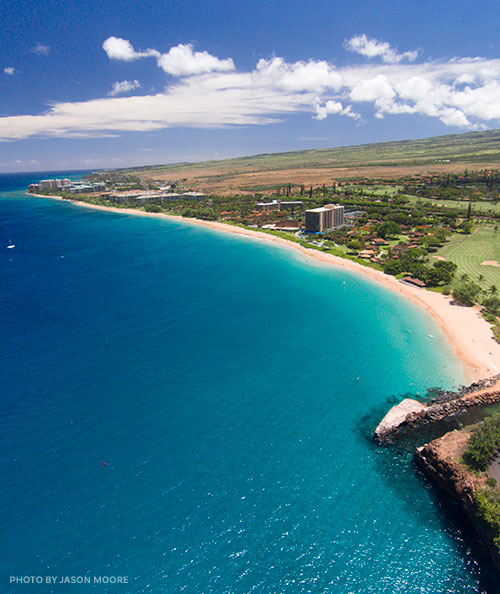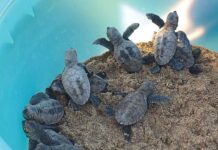
By 2000, research showed that the reef was suffering from runaway growth of native and nonnative algae. A seaweed, algae can grow very rapidly, overwhelming corals and killing them. From the data, it looked like half the coral off Kahekili had been choked out this way in only fifteen years. Says researcher Darla White, who joined Russell Sparks in 2007, “The reef had been subject to algal ‘blooms’ by two species, Acanthophora spicifera [invasive] and Cladophora sericea [native], and they were smothering the reef. And worse, it looked like the numbers of algae-eating fish species were far lower than they should have been, with some, like parrotfish [uhu], at 10 percent of the numbers found in protected areas.” Sparks notes, “This is important, because uhu are incredibly good at scraping algae and keeping the reef clean.”
Then, researchers at the University of Hawai‘i demonstrated that the fishes at this site preferred the invasive algae to native algae. And an idea was born.
In 2009, with the fervent support of local fishing families, Hawai‘i’s Department of Aquatic Resources created the Kahekili Herbivore Fisheries Management Area. (Herbivorous fish are those that eat seaweeds.) Says White, “From the start, Russell went to the local fishing families to let them know what was happening. They were willing to sacrifice to protect the habitat and the future fishing resources of the area.” Kā‘anapali Beach Resort Association has also been a supporter.
The rules of the management area are simple: within its bounds, do not take any fish that eat algae. That means the lovely, brightly colored parrotfishes with their scraping teeth and flirtatious expressions, the many varieties of surgeonfishes with their wickedly bladed tails, and the rudderfishes Hawaiians call nenue. The rules also protect sea urchins, those spiky balls tucked all over the reef like so many Star Trek tribbles, their mouths on the bottom of their bodies. Urchins munch algae like nobody’s business. Says Sparks, “This was a first-of-its-kind strategy to turn the tide on reef decline using the natural preferences of herbivorous fishes and urchins to help restore balance on the reef.”
Liz Foote, executive director of Maui’s Project S.E.A.-Link, had been working with the Department of Aquatic Resources to develop a reef etiquette sign — one that is now seen at more than fifty places around the island. The department was looking for volunteers to do in-water fish surveys, especially on what the fish were eating. Foote’s volunteers were already doing citizen science through REEF surveys (which count numbers of fish and types of species) and REEFcheck (which looks at how well the coral is doing and takes a more detailed look at the animals on the reef). Many of these volunteers signed on to help the department.
With the management area established, Project S.E.A.-Link launched Makai Watch. “Makai” is Hawaiian for “towards the sea,” and Foote explains it as a sort of underwater Neighborhood Watch. Community volunteers work to raise public awareness, and report suspected violations to law enforcement. Foote also began working with Kā‘anapali hotel managers to engage and educate their guests. “Some visitors do want to fish, and then there’s the issue of fish feeding [forbidden in the management area], and of involving water-sports companies and conveying what the rules are,” says Foote. “Everybody needs, and wants, a healthy reef.”




